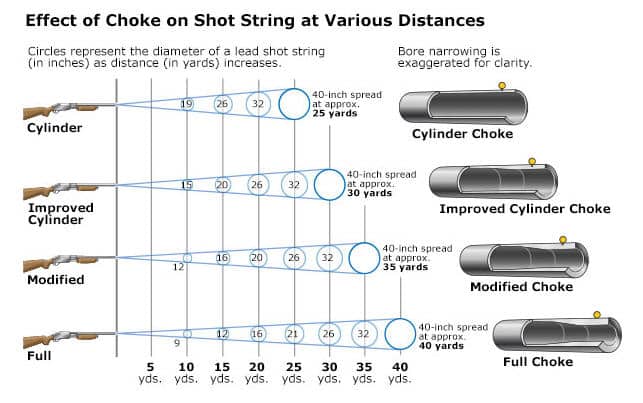So you’ve got yourself a shotgun. Nice. But before you start bragging about your “mad skills” at the range or in the blind, let’s talk about something that could make or break your shot pattern: chokes.
Yep, those little tubes you’ve probably ignored in the bottom of your gear bag are actually pretty important. Let’s get you educated before you end up being that guy at the range—you know, the one who couldn’t hit a barn with a bazooka.
What’s a Choke, Anyway?
A choke is a fancy name for the tapered bit at the end of your shotgun barrel that controls how your shot spreads. Think of it like a showerhead setting for your pellets. Want a wide spray? One setting. Want to laser-beam your shot into a turkey's face at 40 yards? That’s a different setting.
The Fab Four: Most Common Shotgun Chokes
Let’s break down the chokes that actually matter—the ones you’ll use the most. Forget the 12 other options unless you’re the kind of person who alphabetizes their ammo.

Skeet Choke
-
Constriction: Very open.
-
Pattern: Wide and forgiving.
-
Use it for: Shooting fast-moving clays up close, like in skeet shooting (duh).
Great if you like hitting targets while they’re still in your zip code.
Shot Pattern at 25 Yards
Super wide—ideal for short-range targets.
Improved Cylinder (IC)
-
Constriction: Slight.
-
Pattern: Still wide, but with a touch more reach.
-
Use it for: Upland birds, close-range waterfowl, and clay shooting.
IC is the friend who won’t ghost you—it’s dependable, versatile, and a good starter choke if you don’t know what you’re doing (yet).
Shot Pattern at 30 Yards
Moderate spread with a dense center and outer pellets tapering.
Modified
-
Constriction: Medium.
-
Pattern: Balanced spread with decent range.
-
Use it for: Mid-range birds, general-purpose clays, and waterfowl.
Think of Modified like your favorite hoodie—reliable, practical, and works in almost any situation.
Shot Pattern at 35 Yards
Noticeably tighter than IC, good energy retention and coverage.
Full
-
Constriction: Tight.
-
Pattern: Narrow and long-reaching.
-
Use it for: Gobblers, geese, and long-range trap.
Full choke means full commitment. This one’s for when you need surgical precision—or when you want to vaporize a target for dramatic effect.
Shot Pattern at 40 Yards
Very tight grouping—perfect for long-range precision.
Why Choke Selection Matters
Using the wrong choke is like using a hammer to stir your coffee—technically possible, but you're just making a mess. Match your choke to your target distance and ammo, and suddenly you're not just spraying and praying—you’re shooting with purpose.
Heads-Up on Ammo Compatibility
Not all chokes are steel-shot friendly, and some loads pattern better with certain chokes. Always check what your choke and barrel are rated for. If you’re not sure? Ask the pros (spoiler: that’s us).
Final Word: Don’t Be That Guy
You know who. The guy bragging about his goose hunting stories with a Skeet choke on his duck gun. Learn your chokes, learn your patterns, and hit more of what you aim at.
Or don’t—and give us material for next week’s blog.
